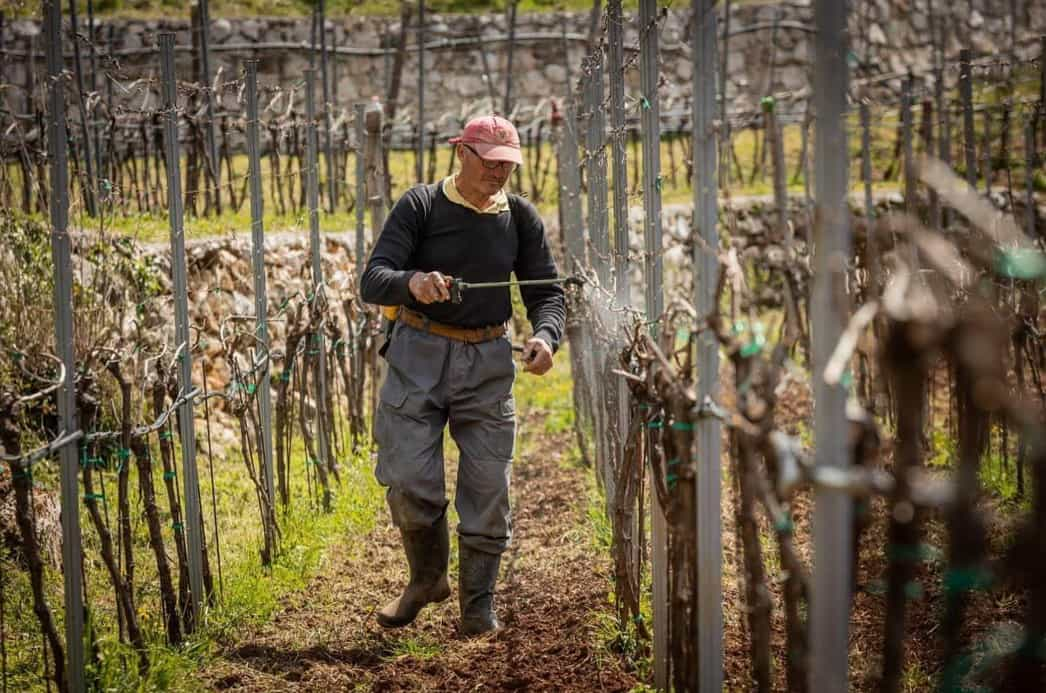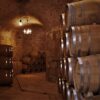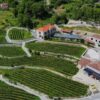The Winemaking process in Montenegro from the vineyard to the bottle.
In Montenegro, wine is more than just a product—it’s a fusion of land, sun, wind, and generations of human knowledge passed down from father to son. The blend of tradition and modern technology gives Montenegrin wines their unique character. Rich, vibrant, and unforgettable.Winemaking here has deep roots.
The history of wine in Montenegro stretches back centuries, and the knowledge of the vine and the craft is handed down through generations. Below, we guide you through the essential steps in the winemaking process, as practised by Montenegrin wineries.
Step 1 – Grape harvest
It all begins in the vineyard, when the vine is ready to offer the fruit of its year-long effort. In Montenegro, the grape harvest usually takes place from late August to mid-September, depending on the grape variety and weather conditions.
Hand harvesting is still a common practice, as it allows careful selection of only the healthiest, ripest grape clusters. Winemakers choose the harvest moment with precision—grapes picked too early produce more acidic wines, while a late harvest can bring richer aromas but also risks of losing freshness.
Weather on the day of harvest also plays a key role: a cool morning helps preserve the fruit’s aroma and natural freshness.
Step 2 – Grape processing
Immediately after the harvest, grapes are transported to the cellar where the processing begins. White varieties are usually pressed right away, while for red—or, as often called in Montenegro, “black”—wines, the juice is left in contact with the skins during maceration.
This contact is crucial for the wine’s colour, aroma, and structure. Modern Montenegrin wineries use stainless steel tanks and advanced presses that allow precise control over the process, while smaller estates still use traditional wooden vats and manual presses.
Step 3 – Fermentation
Fermentation is the magical phase where, through the action of yeast, grape sugars are transformed into alcohol, while heat, carbon dioxide, and complex aromas are released.
This process can last from seven days to several weeks, depending on the style of wine the winemaker aims to achieve. In Montenegro, winemakers pay close attention to fermentation temperature. It must be low enough to preserve fresh fruity aromas, but high enough to allow the development of more complex flavours.
Some wineries choose to use indigenous yeasts from the grape skins to further highlight the character of the local terroir.
Step 4 – Wine ageing
Once fermentation is complete, the wine enters its maturation phase. White wines are usually aged in stainless steel tanks to retain freshness, while red wines often go into oak barrels where they develop additional layers of complexity.
Montenegrin wineries commonly use local or French oak, and aging time can vary, from six months for lighter wines to two or three years for more serious red reserve labels. During this period, the wine slowly matures, enriched with aromas of vanilla, smoke, and spice, and gains its distinctive fullness.
Step 5 – Bottling and bottle ageing
Once the wine reaches the desired balance of flavour and aroma, it moves on to bottling. This step must be done carefully, under sterile conditions, often with minimal use of sulfur to keep the wine stable but natural.
After bottling, the wine is left to “rest” in the bottle for a while. This quiet period allows the flavours to round out and all the elements the winemakers have carefully developed over months or even years to harmonise.
Step 6 – Montenegro’s climate and terroir
No wine is complete without its land, and Montenegro offers ideal conditions for viticulture. Mediterranean climate, abundant sunshine, cool mountain breezes, and diverse soils come together to form a terroir that gives wines their unique character.
Thanks to these natural advantages, Montenegrin wines are often full-bodied, with pronounced fruit aromas, freshness, and a bold finish that makes them unforgettable.
At the end of the wine journey
The winemaking process in Montenegro relies on precision, tradition, and modern technology. Every step plays an essential role in creating wine that reflects the character of its homeland.
Montenegrin wineries are increasingly investing in quality, control, and authenticity, positioning themselves on the map of serious wine tourism and the international wine scene. Now that you’re familiar with the six key elements of the Montenegrin wine experience, visit our Wine of Montenegro contact page for more information about our wine tours.
Join our newsletter for offers!
Sign up now to receive the latest updates on promotions and coupons. Don’t worry, we won’t spam you!






